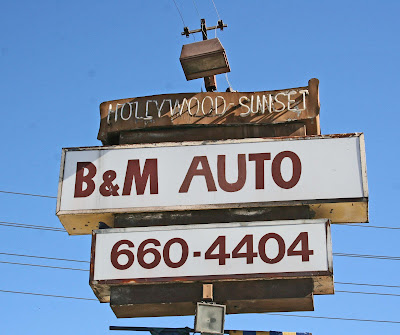Unlike a lot of walkers I am not especially anti-car. Oh sure, when they almost run me down then I feel outraged and antagonistic toward the drivers, but I feel just as outraged and antagonists towards pedestrians who try to shoulder me off the sidewalk.
When I first moved to Los Angeles certain people back in England asked me why, what was the attraction? I always thought it was one of those “If you have to ask then you’re never going to know” type questions, and I replied (only a little flippantly), “Well, if you like quirky architecture, exotic flora and fauna, and cool cars, where else are you going to go?” This, admittedly, did not convince anybody who wasn’t already prepared to be convinced.
Wherever I walk I always look at the environment around me, and since I do much of my walking in cities, and most of that in LA, I inevitably see a lot of cars. Since they’re there I figure I might as well appreciate them. Shiny new cars don’t do much for me, but give me a car with a certain amount of patina and a hint of ruin, and I’m in aesthetic heaven. Hell, I’m even likely to take a photograph.
There was one day after I’d spent a weekend looking at a lot of art by Richard Prince – the stuff with with cars and body panels – when suddenly there seemed to be Richard Prince works of art on every street corner. This is surely one of the defining qualities of great art, that there are times the when whole world looks like it’s been created by the artist.
Still, when I first arrived in LA, however committed I was to walking, it became obvious that I really couldn’t live here without a car. I didn’t want a brand new car, and I didn’t want to deal with a used car salesman, so I developed a plan. I would walk the streets of LA and the right car would present itself to me. I’d be walking along and I’d see a car with a “for sale” sign in the window and that would be “my” car. Which is why I ended up as the owner of a 1966 Dodge Dart that was parked in the street half a mile away from where I live.
In fact there was one car dealer’s lot that did vaguely attract me. It was called B&M Auto, located right at the place where Sunset and Hollywood Boulevard’s converge. It was a slightly scruffy, down at heel operation, but they always had some interesting cars for sale, say a Mustang resprayed an improbable yellow, a Jeep Wagoneer, or an E type Jag with a dent in every panel, that kind of thing.
Of course I wouldn’t have felt completely confident buying an E Type Jag with a dent in every panel from a slightly scruffy, down at heel operation, and I suppose that’s why I didn’t. But any time I walked around the area I always looked at what they had for sale and I’m not saying I thought it would B&M Auto always be there – there was always a provisional feel about the place - but even so it came as a blow to walk past the lot last weekend and find all the cars gone.

The office was empty, there was a sign up in the window saying that B&M Auto was no more and that a new tenant had been found for the premises. There was something deeply melancholy about the change, and the absence.
I don’t want to make too much of the “change and decay in all around I see” business, but I’ve now lived in LA long enough that quite a few things I liked have gone. Many a soulful building or landmark has been demolished, this Bob’s Big Boy and the very mid-century Cadillac dealership beyond on Wilshire, for instance.
Just a few weeks back they took away the giant hot dog that stood at the corner of Hollywood Boulevard and Western Avenue. Well frankly that one always seemed doomed. The surprising thing here was that it lasted so long. I wonder if somebody bought it to preserve it. For that matter I wonder if somebody’s going to buy the B&M Auto sign.
So, in a world of civic and architectural uncertainty the statue of Rock and Bullwinkle that stands at 8218 Sunset Boulevard seems a touchstone of stability and continuity. It’s outside what used to be the Jay Ward headquarters and gift shop, now a dog grooming parlor. The statue first appeared in 1961 – Jayne Mansfield was there at the unveiling – so it’s been standing over 50 years. In Hollywood terms that makes it as historic and permanent as the statuary of ancient of Rome.
And you can say this for the custodians of Bullwinkle, they’re not letting him turn into a ruin. Every now and again bits of him fall off, including his hand at one point apparently, but fortunately LA has the kind of skilled artisans you can call up and ask to come over and repair your Bullwinkle statue. You try doing that in the Eternal City.















































